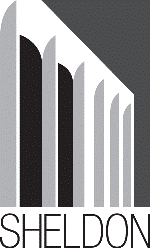Fine and Performing Arts, Hixson-Lied College of

Sheldon Museum of Art: Catalogs and Publications
Date of this Version
1997
Citation
The Tenth Annual Sheldon Statewide Exhibition, Sheldon Memorial Art Gallery and Sculpture Garden University of Nebraska-Lincoln. 1996-97.
Abstract
The tenth annual Sheldon Statewide exhibition, Trompe l'oeil: The Art of Deception, marks a decade in the uniquely successful partnership between the Sheldon Memorial Art Gallery and Sculpture Garden, our principal funding support group, the Nebraska Art Association, a nonprofit volunteer membership organization dedicated to the advancement of the visual arts in Nebraska, and twenty-two Nebraska communities that have served as exhibition venues in the past ten years. Local sponsors who support the exhibition in their community, and volunteer docents who disseminate vitally important information to the school children and adults of Nebraska have been equally invaluable to the success of Sheldon Statewide. Their generosity has enabled over 133,000 individuals to experience both the immediate and long-range goals of Sheldon Statewide with ten diverse exhibitions, listed at the right, each offering a mini-art history course focusing on Sheldon Gallery's renowned collection.
Curated by Sheldon Gallery Director, George Neubert, Trompe l'oeil: The Art of Deception includes twenty works, paintings as well as sculptural objects, that are highly realistic and illusionistic. Trompe l'oeil, a French term meaning to fool, or deceive, the eye, describes the rarest form of traditional still-life painting. It is illusionism carried beyond certainty to deception. To successfully fool the eye of the viewer, artists choose objects, situations and compositional devices using as little depth as possible. A flat surface stops the eye at the picture plane, while objects placed upon this surface seem to protrude, slightly, into the viewer's space. Archetypal trompe l'oeil paintings are always stilllifes, dealing with objects small enough to be represented in their natural size. Historically, the trompe l'oeil tradition in painting is rooted in antiquity. After the sixteenth century, still-life and illusionistic representation was practiced and refined by Dutch, Spanish, Italian and German artists. Severin Roesen's Still Life With Fruit and Champagne Glass, c.1857, shows the influence of classic seventeenth-century Dutch conventions.
Nineteenth-century artist William Michael Harnett's painting, Old Violin, is the subject of Frank Tuchfarber's handpainted chromolithograph on glass, a rare reproduction of this famous work. Trompe l'oeil painting of paper currency was, and remains a characteristically American art form. Artists such as Nicholas A. Brooks and Otis Kaye, were extremely capable practitioners of this genre, a practice that baffled the Secret Service in the 1800s and resulted in passage of a bill by Congress in 1909 prohibiting all nonofficial copies of monetary tokens.


Comments
All images are copyright by the original artists. Publication copyright 1997 The Regents of the University of Nebraska